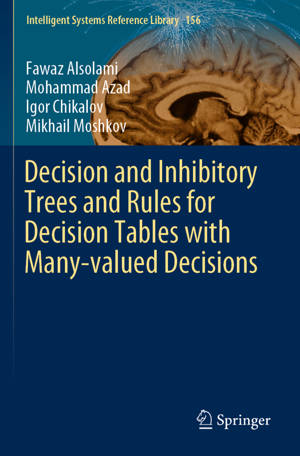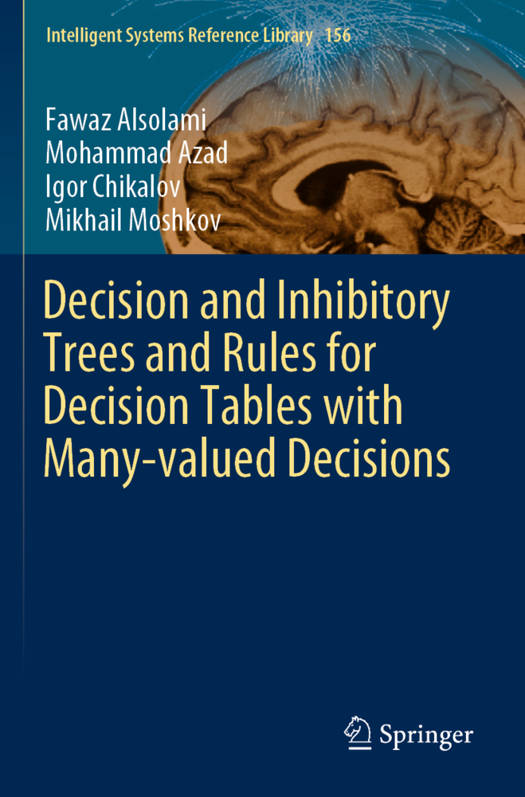
- Retrait gratuit dans votre magasin Club
- 7.000.000 titres dans notre catalogue
- Payer en toute sécurité
- Toujours un magasin près de chez vous
- Retrait gratuit dans votre magasin Club
- 7.000.0000 titres dans notre catalogue
- Payer en toute sécurité
- Toujours un magasin près de chez vous
Decision and Inhibitory Trees and Rules for Decision Tables with Many-Valued Decisions
Fawaz Alsolami, Mohammad Azad, Igor Chikalov, Mikhail MoshkovDescription
The results presented here (including the assessment of a new tool - inhibitory trees) offer valuable tools for researchers in the areas of data mining, knowledge discovery, and machine learning, especially those whose work involves decision tables with many-valued decisions. The authors consider various examples of problems and corresponding decision tables with many-valued decisions, discuss the difference between decision and inhibitory trees and rules, and develop tools for their analysis and design. Applications include the study of totally optimal (optimal in relation to a number of criteria simultaneously) decision and inhibitory trees and rules; the comparison of greedy heuristics for tree and rule construction as single-criterion and bi-criteria optimization algorithms; and the development of a restricted multi-pruning approach used in classification and knowledge representation.
Spécifications
Parties prenantes
- Auteur(s) :
- Editeur:
Contenu
- Nombre de pages :
- 276
- Langue:
- Anglais
- Collection :
- Tome:
- n° 156
Caractéristiques
- EAN:
- 9783030128562
- Date de parution :
- 27-11-20
- Format:
- Livre broché
- Format numérique:
- Trade paperback (VS)
- Dimensions :
- 156 mm x 234 mm
- Poids :
- 417 g

Les avis
Nous publions uniquement les avis qui respectent les conditions requises. Consultez nos conditions pour les avis.






